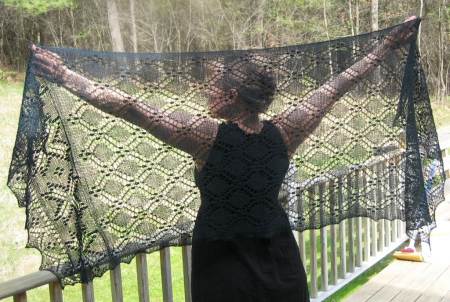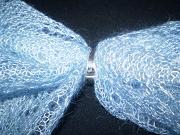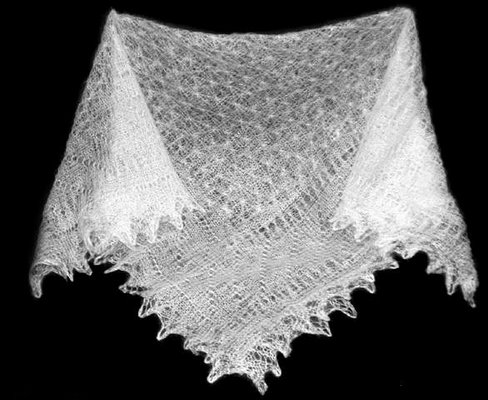Orenburg Shawls: A Tradition that Never Goes Out of Style
Written by Vadim on April 13, 2011 – 7:32 pm -
The Orenburg shawl is one of the icons of Russia, a truly Russian item that can only be made properly by trained Russian artisans according to age-old secrets. Finely knit from the fur of an indigenous goat that is similar to cashmere or angora, the Orenburg shawl offers unbelievable warmth for icy Russian winters but is thin and durable enough to be pulled through a wedding ring. For this reason, they are often known as wedding ring shawls.
Orenburg is a region of Russia where down knitting began more than 250 years ago. The down of the Orenburg goat is unique for its fine texture, which at 16-18 micrometers is substantially thinner than even that of Angora goats. However, it is very strong and warm as well, creating a yarn that is strong and soft enough to be enjoyed for a lifetime in a variety of products. Only goats raised in Orenburg have this down; when the famous goats were imported to France in the nineteenth century, they developed coarse hair. It is believed that the cold, damp climate of Orenburg is the cause of the unique down texture.

The yarn used for Orenburg shawls comes from a yearly brushing of the goats in the spring. After the goats are carefully brushed, usually yielding one or two pounds of down, the down is carefully spun by hand into yarn. This delicate yarn is then knitted according to the artisan’s preference, usually into a geometrical pattern that is barely thicker than a spider web. Many of the patterns have been passed down for generations and are known only to one family. The finished product is then blocked and washed.
Orenburg shawls traditionally were large and used to keep warm through the blizzards that are typical of winter on the steppes. However, weavers soon began making smaller items such as kerchiefs. Originally made from goat down alone, the artisans soon discovered that adding a small amount of silk fiber to the yarn made for a stronger and warmer product. Because the goat down is strong—stronger than wool, in fact—the result is a very fine yet surprisingly strong shawl that is sturdy enough for everyday use but beautiful enough for special occasions.
France has historically been one of the most avid markets for Orenburg goat down and shawls. In the eighteenth and nineteenth centuries, French fans paid more for Orenburg down than cashmere and imported tens of thousands of pounds of the fiber. After the rise of the Soviet Union, production was shifted to plants such as the Orenburg Downy Shawls Plant, where the shawls are still made by hand. Western Europeans still comprise one of the largest markets for Orenburg shawls.

An Orenburg shawl may be gray, light brown, or white, depending on the color of the goat’s fur. Mixtures of colors are also sometimes used. The Orenburg goat fur is sometimes combined with Volgograd goat fur to get a snowy white color. However, the shawls remain uniformly beautiful and high quality. Orenburg shawls are still made by hand in a labor intensive manner, making them a valuable investment in a lifetime of beauty and warmth.
Tags: fashion, orenburg shawl, patok, shawl
Posted in General | No Comments »




You must be logged in to post a comment.